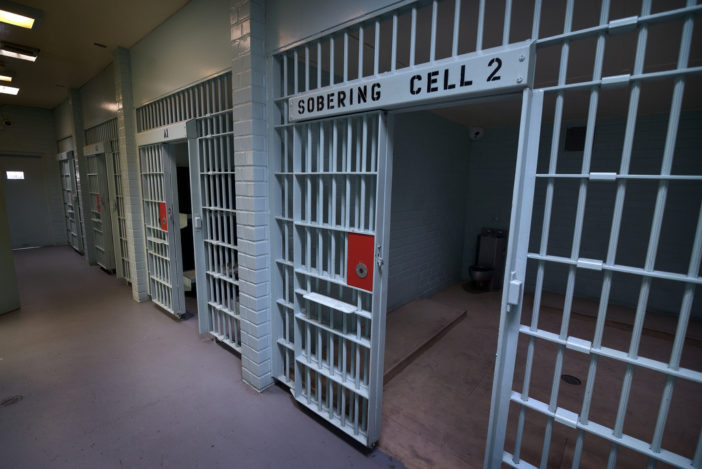The jail is quiet as jailer Aaron Koplas makes his way through the corridors of La Habra’s city jail. He carries one key ring with four oversized keys on it. Each one is color coordinated to open a door in the jail.
Aside from the clanking sound of the keys, the La Habra Police Department’s jail is peaceful for a Tuesday morning. Two “regulars” were arrested earlier. One sits in the booking cell awaiting the booking process and the other is in a jail cell awaiting the next step of his journey.
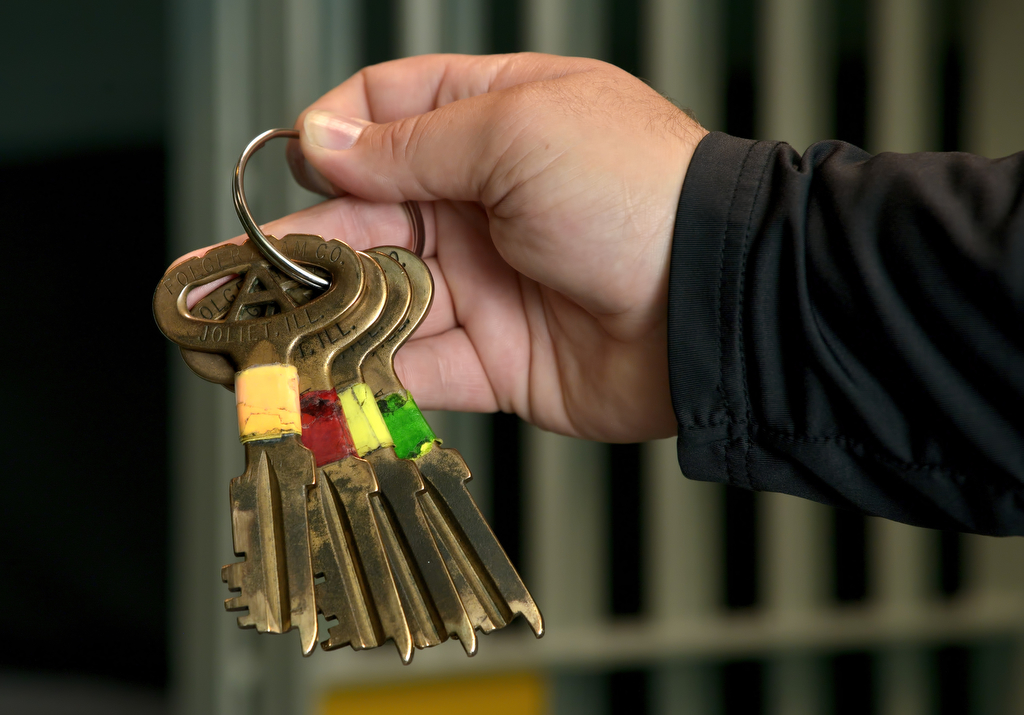
A set of oversized keys for the jail cell’s large locks at La Habra Police Department’s local jail system.
Photo by Steven Georges/Behind the Badge
For Koplas and La Habra police officials, the city’s jail is a temporary holding facility for inmates arrested on a variety of charges. Some will be heading to county jail or another law enforcement facility, some will be released on citation and get to go home.
But while the inmates wait, La Habra jailers and police officers do everything they can to ensure the safety of those under their roof.
“We are a ‘Type 1’ detention facility and see about 120 inmates come through here a month,” Koplas said. “We have showers, food, beds, and clothes should an inmate need them … we provide a lot of amenities.”
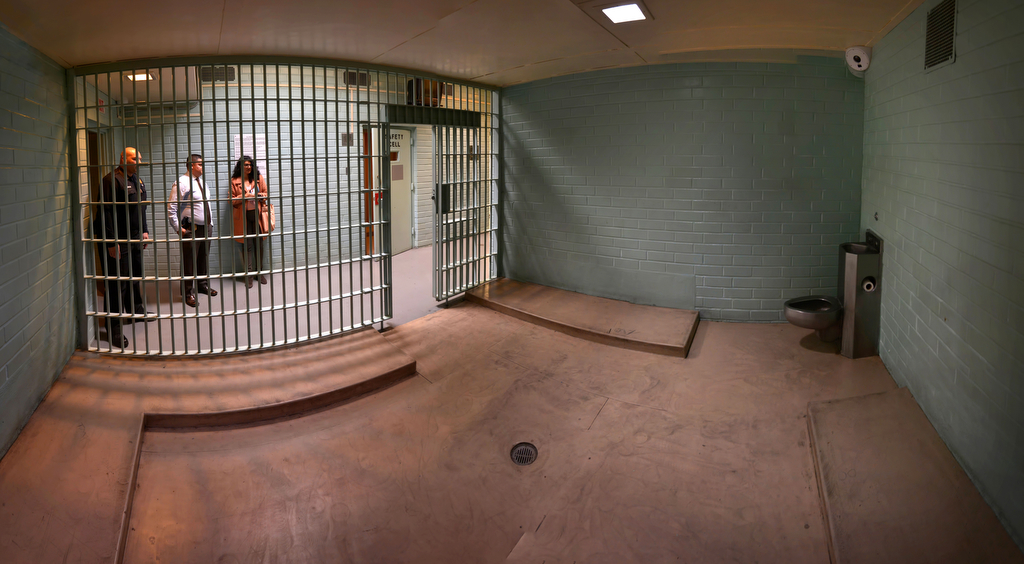
Sobering Cell 2 at the La Habra Police Department where everything an inmate might use to harm themselves, even the beds, are removed.
Photo by Steven Georges/Behind the Badge
Most city jails are Type I detention facilities, which keep people for no more than 96 hours after booking. Other facilities such as a Type II facilities, think of a bigger county jail, allow for longer detentions and can be used for the detention of people pending arraignment, during trial and upon a sentencing.
The La Habra Jail is still the same light shade of blue from when it opened in the 1950s. The jail is composed of sobering cells, a padded safety cell and separated male and female sections. If necessary the two intake/booking rooms that can be used to keep inmates separated from the others, if they are a risk to the health and or safety of the other inmates. The separate male and female cells come with at least two beds per cell, a toilet and sink, and a pay phone.

An inside view of one of the jail cells with Jail Site Supervisor Aaron Koplas.
Photo by Steven Georges/Behind the Badge
Despite the myth of the one phone call from jail, those in custody at La Habra use the phone as many times as they wish in five-minute increments.
At full capacity, the La Habra Jail can hold up to 23 inmates, but on their busiest day La Habra police officials have seen 14 people.
On a typical day in La Habra, the jail gets about four people in custody. But over the weekends or on a busy holiday weekend, police see an uptick in inmates as drunk drivers try to make their way through La Habra and onto a freeway.
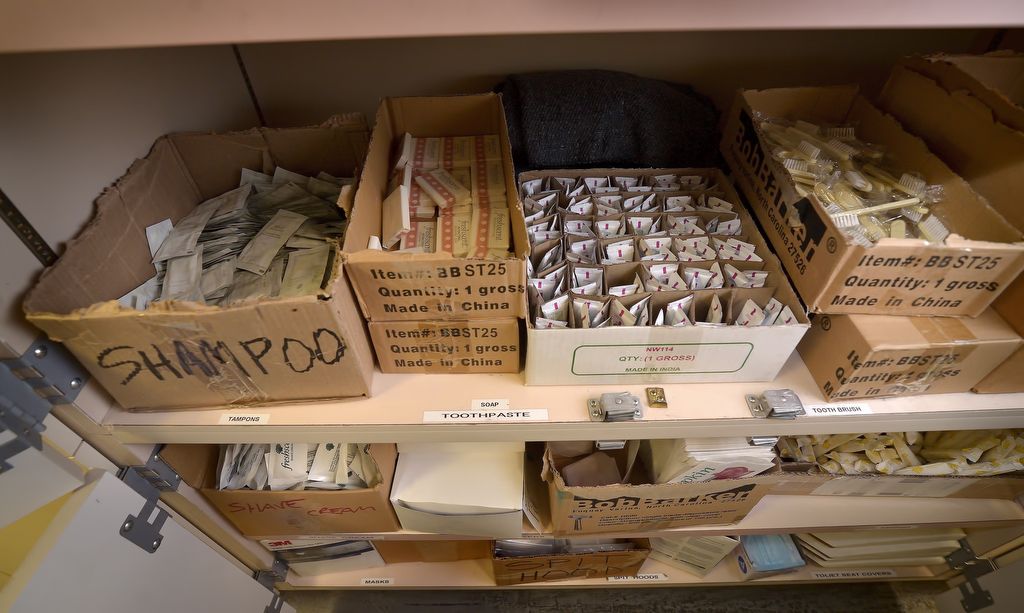
Everything from toothbrushes to shampoo are available for La Habra Police Department inmates to use.
Photo by Steven Georges/Behind the Badge
The La Habra Police Department contracts its jailer services. Koplas, a trained correctional officer from the national security company G4S, has been assigned to worked at La Habra for 3 years and oversees a team of four full-time jailers and one part timer. Each have the complicated job of processing inmates who have been picked up by the police for a bevy of reasons –drunk driving, robberies, petty theft, violent crimes and outstanding warrants, just to name a few.
After an officer arrests someone and completes a “pre-booking” they are handed over to Koplas and his team for the full booking process. “Most of the time they are emotional about having been arrested and they are still in denial about what is happening,” Koplas said. “We take the time to talk to them, calm them down and find out what they need and who they are. We take their photos, finger print them and even take photos of their tattoos, anything that can help identify them. Medical screenings are completed to find out the arrestees medical and mental history as well as several other booking questions.”
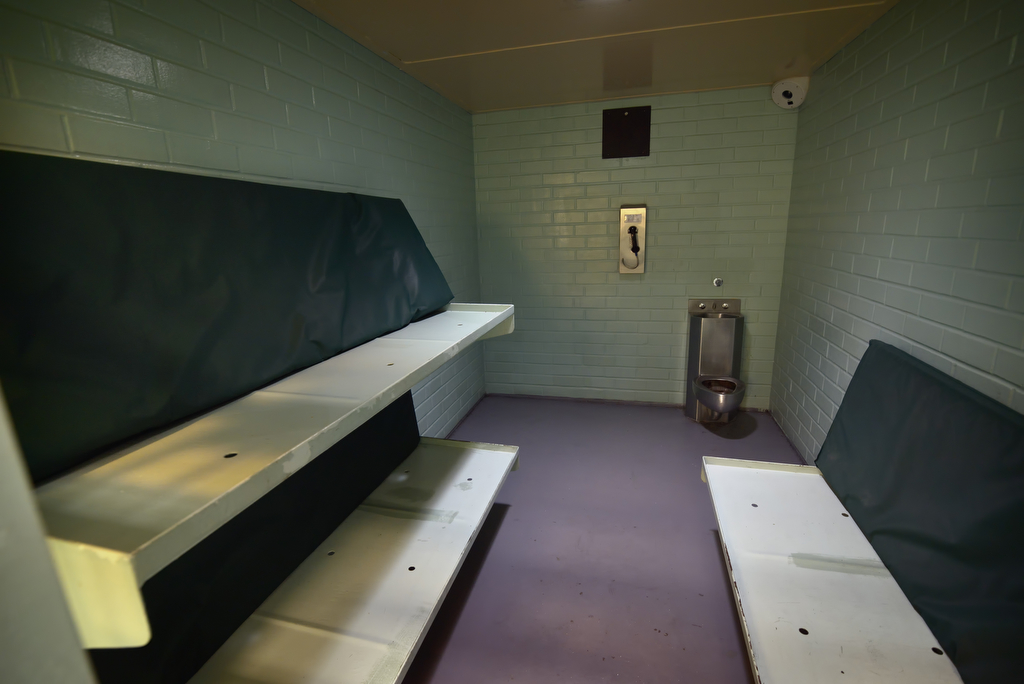
A typical jail cell inside La Habra Police Department headquarters with the mattresses turned up.
Photo by Steven Georges/Behind the Badge
The intake process is often lengthy and not as linear as one may think. Jailers have gone through a training course that helps them get the proper information from inmates and teaches them how to handle all of the different personalities and age groups that come through the La Habra Jail.
“Juveniles always get priority at intake,” said Sgt. Jose Rocha, who oversees the La Habra Jail. “We try to get them picked up by their parents as quickly as possible. By law we can only hold them for six hours or we must place them in Juvenile Hall. If parents don’t want to come because they are having troubles at home, then Juvenile Hall is where we must take them.”

La Habra Police Officer Nicole Pizati was called back to the police station at 1 a.m. to perform a search of a female inmate who was being transferred to Orange County Jail. Policy calls for female officers to perform searches of females in custody.
Photo by Steven Georges/Behind the Badge
Once inmates are booked, processed and placed in their cells, Koplas spends much of his shift walking through the halls of the jail, ensuring the inmates are safe, checking on meal service, and staying vigilant until those in custody are ready to leave to their next stop.
“The safety of the inmates is paramount,” Koplas said. “Everything we do is to ensure that while people are in our custody, they are safe and we are safe.”
 Behind the Badge
Behind the Badge
